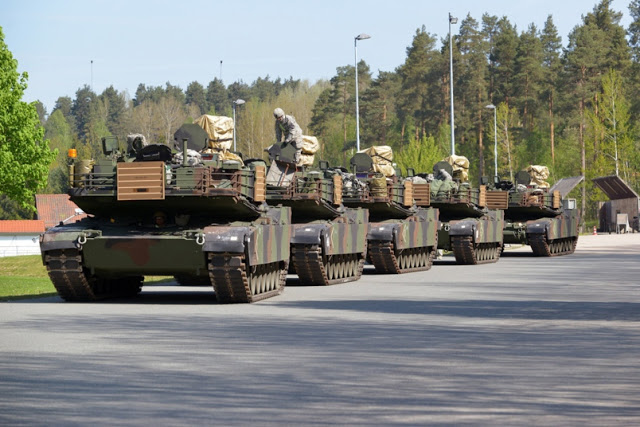From the perspective of the North Atlantic Treaty Organization (NATO), Russia’s threat to the three Baltic republics of Estonia, Latvia, and Lithuania — former Soviet republics, now member states that border Russian territory — may be the most problematic scenario for Europe. In a series of war games conducted between summer 2014 and spring 2015, RAND Arroyo Center examined the shape and probable outcome of a near-term Russian invasion of the Baltic states. The games’ findings are unambiguous: As presently postured, NATO cannot successfully defend the territory of its most exposed members. Fortunately, it will not require Herculean effort to avoid such a failure. Further gaming indicates that a force of about seven brigades, including three heavy armored brigades — adequately supported by airpower, land-based fires, and other enablers on the ground and ready to fight at the onset of hostilities — could suffice to prevent the rapid overrun of the Baltic states.
As Presently Postured, NATO Cannot Successfully Defend the Territory of its Most Exposed Members
Across multiple games using a wide range of expert participants in and out of uniform playing both sides, the longest it has taken Russian forces to reach the outskirts of the Estonian and/or Latvian capitals of Tallinn and Riga, respectively, is 60 hours.
Such a rapid defeat would leave NATO with a limited number of options, all bad.
It Is Possible to Avoid Such Consequences
A force of about seven brigades, including three heavy armored brigades — adequately supported by airpower, land-based fires, and other enablers on the ground and ready to fight at the onset of hostilities — could suffice to prevent the rapid overrun of the Baltic states.
While not sufficient to mount a sustained defense of the region or to achieve NATO’s ultimate end state of restoring its members’ territorial integrity, such a posture would fundamentally change the strategic picture as seen from Moscow.
So Rand is recommending about 25000 to 35000 troops. However, the main component are the tanks and air power which would be about $13 billion worth of equipment.
Arguments against the Rand analysis are:
- While Russia has been willing to use force against countries like Georgia and Ukraine, there is no reason to think it would attack members of NATO.
- Strengthening NATO’s defense along its eastern frontier could ultimately lead to the very conflict it seeks to prevent.
- The more challenging Russian military threat to the Baltic republics would be limited “salami-slicing” incursions to which NATO would have political difficulty responding.
Sound force planning is predicated on identifying circumstances wherein three factors coincide:
- Places and events in which the nation has important interests at stake
- Actors who are pursuing objectives at odds with those interests
- Situations in which those actors have sufficient military capabilities to pose a credible and consequential threat of action.
All three of these factors clearly figure in the current situation on NATO’s eastern flank. First, the security of NATO allies has been an enduring American commitment for decades. Second, Russia’s military doctrine refers to “the power potential of the North Atlantic Treaty Organization” as the first of the “external military risks” confronting Moscow. Putin’s behavior in Ukraine and Syria clearly indicate his willingness to employ military power in ways opposed to Washington’s objectives and concerns. Further, events of the last several years make it clear that Putin seeks to weaken and divide NATO to re-establish a droit de regard over states on Russia’s western periphery. Finally, our work demonstrates that Russia possesses a predominance of conventional military power in the region.
The Rand wargames tested the value of the enhanced NATO force pit it against a substantially larger (by 60 to 80 percent) Russian order of battle than the one in our baseline scenario. Yet even assuming this very substantial Russian response to our recommended actions, the addition of heavy NATO forces turns the situation from one in which Russian victory is likely to be quick and inexpensive into one where neither of those adjectives applies
SOURCES – Rand Corp, War on the Rocks

Brian Wang is a Futurist Thought Leader and a popular Science blogger with 1 million readers per month. His blog Nextbigfuture.com is ranked #1 Science News Blog. It covers many disruptive technology and trends including Space, Robotics, Artificial Intelligence, Medicine, Anti-aging Biotechnology, and Nanotechnology.
Known for identifying cutting edge technologies, he is currently a Co-Founder of a startup and fundraiser for high potential early-stage companies. He is the Head of Research for Allocations for deep technology investments and an Angel Investor at Space Angels.
A frequent speaker at corporations, he has been a TEDx speaker, a Singularity University speaker and guest at numerous interviews for radio and podcasts. He is open to public speaking and advising engagements.


